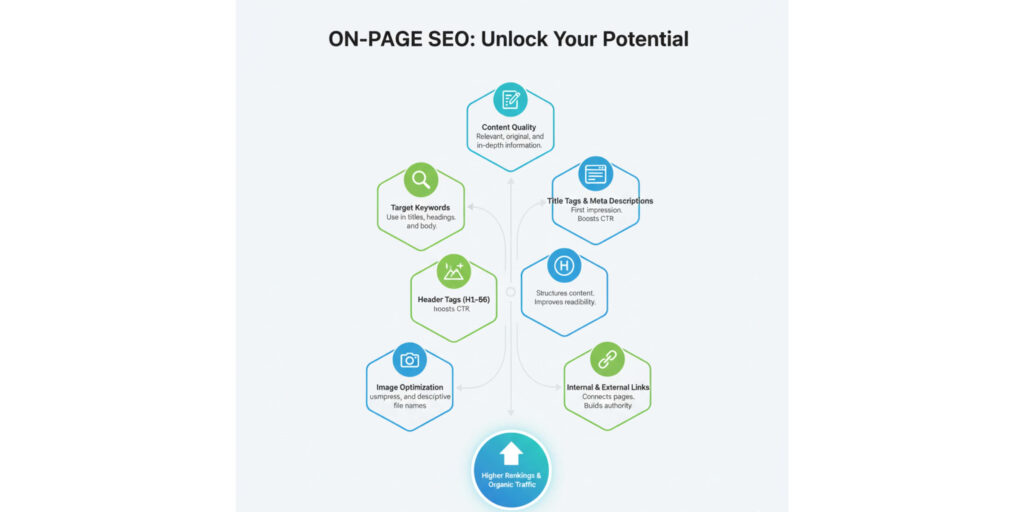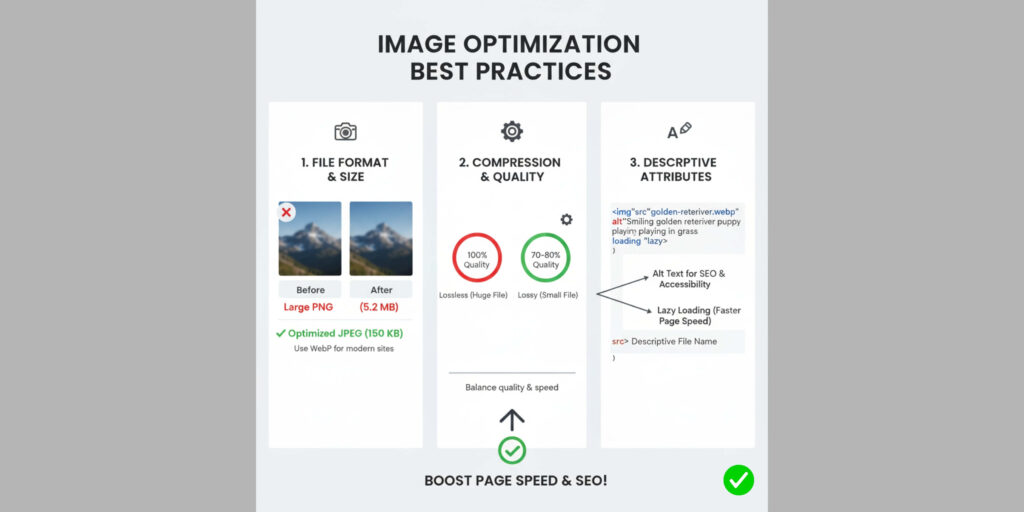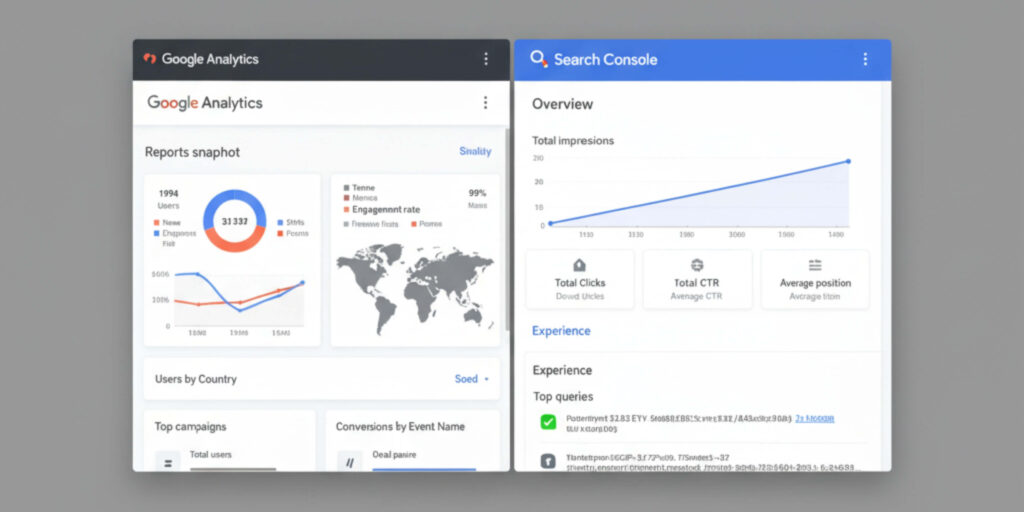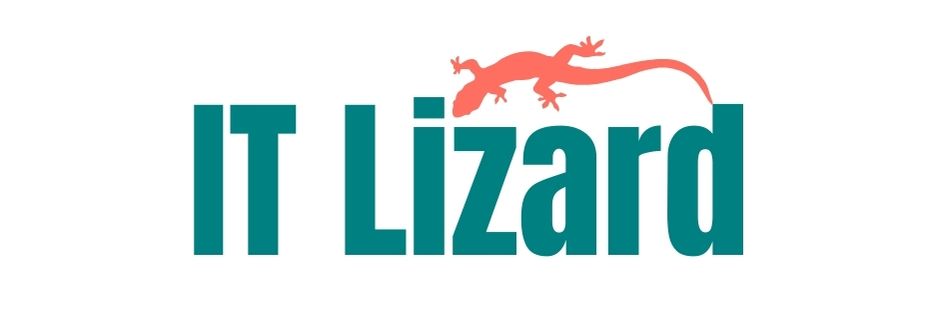On-Page SEO
On-Page SEO: The Ultimate Guide to Improve Your Google Rankings

If you want to rank higher on Google, mastering On-Page SEO is essential. This process involves optimizing individual pages of your website to improve rankings and drive more organic traffic. Whether you’re running an e-commerce site, offering SaaS services, or operating a local business, on-page SEO plays a vital role in your site’s success. In this guide, we’ll walk you through the best practices, strategies, and actionable tips for optimizing your website’s pages for better visibility, user engagement, and ultimately, more conversions. Let’s get started!
What is On-Page SEO and Why Does It Matter?
On-Page SEO refers to the strategies you implement directly within your website’s pages to optimize them for search engines. This includes elements like content, HTML tags, and images.
Why is On-Page SEO Crucial?
- Higher Search Rankings: Well-optimized pages rank higher on Google.
- Improved User Experience: A site optimized for SEO is easier to navigate.
- Increased Organic Traffic: Ranking high leads to more traffic and conversions.
By following SEO best practices, you help search engines understand your content better, improving your site’s credibility and visibility.
Key On-Page SEO Factors to Boost Your Rankings
To achieve better rankings on Google, focus on the following essential on-page elements:
Title Tags and Meta Descriptions
- Title Tags: Include primary keywords naturally in your title tag (≤60 characters). It should be descriptive, relevant, and enticing for users.
- Meta Descriptions: Write compelling descriptions that include secondary keywords (≤160 characters). These should encourage users to click.
Header Tags (H1, H2, H3)
- Use H1 for your main title and H2 for subheadings. This helps search engines understand the hierarchy of your content.
- Break your content into sections with H3 subheadings to make it scannable and digestible for readers.
Keyword Optimization
Use your main and secondary keywords strategically in your content. Include them in:
- The first 100 words
- Headers (H1, H2, H3)
- Throughout your content (natural flow, don’t stuff)
- Alt text for images
URL Structure
Ensure your URLs are clean, descriptive, and keyword-rich. For example:
- Example: http://www.yoursite.com/on-page-seo-guide
- Avoid long, complex URLs that confuse both users and search engines.

How to Optimize Content for On-Page SEO Success
Effective content optimization is at the heart of On-Page SEO. Here’s how to create content that performs well:
Write High-Quality, Engaging Content
Google loves content that’s helpful and answers user intent. To create engaging content:
- Focus on user intent (informational, transactional, navigational).
- Provide value through in-depth, well-researched articles.
- Keep your sentences short and scannable for better readability.
Incorporate LSI Keywords
Latent Semantic Indexing (LSI) keywords are terms related to your main keyword. By naturally using them in your content, you help search engines understand the context of your page, improving rankings.
Optimize for Featured Snippets
To grab that coveted position zero on Google, structure your content for featured snippets:
- Use numbered lists or bulleted points for steps.
- Provide direct answers in concise paragraphs.
Use questions in your subheadings that match user search queries.

Improving On-Page SEO for Images and Multimedia
Images, videos, and infographics enhance user engagement and SEO. Here’s how to optimize them:
Image Optimization
- Descriptive Filenames: Use relevant keywords in your image filenames.
- Alt Text: Include your main keyword and a brief description of the image.
- Image Size: Compress images to improve load times and performance.
Video SEO
Embed videos with clear, keyword-rich titles and descriptions. Use video schema markup to help Google index your content more effectively.

SEO Tools and Resources for On-Page Optimization
To track your On-Page SEO performance, use these trusted tools and resources:
- Google Analytics: Monitor your site’s organic traffic and user behavior.
- Google Search Console: Identify technical issues and track keyword performance.
- Ahrefs: Analyze backlinks and keyword rankings.
On-Page SEO Pricing Packages
| Package Type | Features | Price (USD) |
|---|---|---|
| Basic | 50 Keywords, Basic Competitor Analysis, Title & Meta Tag Optimization, Image Alt Text Optimization | $299 |
| Standard | 100 Keywords, Competitor Gap Analysis, Search Intent Focus, Header Tag Optimization, Content Optimization | $499 |
| Premium | 200 Keywords, Full Market Analysis, Ongoing Updates, Schema Markup, Mobile Optimization, Advanced Content Strategy | $799 |
Our Website Audit Process
Our website audit process is comprehensive and transparent. Here’s how we work:
- Initial Consultation: We understand your business and goals.
- Audit Execution: We perform a detailed audit of your website’s performance, SEO, and user experience.
- Audit Report: We provide a clear, easy-to-understand report with action items.
- Implementation: We can help implement recommended improvements or guide your team to do so.
- Ongoing Monitoring: We provide ongoing analysis and support to ensure continuous growth.
FAQ – (On-Page SEO)
On-Page SEO refers to optimizing elements like content, title tags, headers, and images within your website to improve search rankings and visibility.
Title tags are crucial for SEO because they help search engines and users understand the content of your page. A well-optimized title improves CTR and rankings.
Use tools like Google Analytics and Google Search Console to track your keyword rankings, organic traffic, and user engagement.
Focus on 1-2 primary keywords and 3-4 secondary keywords for optimal keyword density (1-1.5%).
Implement On-Page SEO for Greater Success
Mastering On-Page SEO is essential for improving your website’s search engine rankings and boosting organic traffic. By optimizing key elements like content, meta tags, images, and URLs, you ensure your website provides a great user experience while adhering to search engine best practices. Start optimizing your site today, and if you need help, contact us for a free SEO audit and consultation!
Author Bio
Written by Rakibuzzaman Rakib, SEO Expert
He is a Certified SEO Specialist with 5+ years of experience in digital marketing. He has helped e-commerce, SaaS, and real estate brands grow online and regularly shares insights on SEO and Google Ads.
